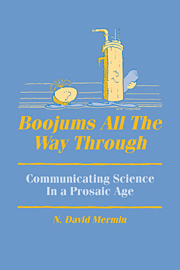25 - Variational principles in dynamics and quantum theory
Published online by Cambridge University Press: 02 December 2009
Summary
This is the third edition of a little volume, first published in 1952, that traces the uses of the variational principle in physical science all the way from Hero of Alexandria to Schwinger of Massachusetts. The occasion for the new edition is the addition of an essay by Laurence Mittag, Michael Stephen, and Wolfgang Yourgrau on the hydrodynamics of normal fluids and superfluids, emphasizing variational formulations.
The book, however, is worth commenting on as a whole, for it has languished in an undeserved obscurity. It offers concise and elegant formulations of the great variational principles of optics, mechanics, electrodynamics, quantum theory (old and new), and now, hydrodynamics. Although each topic is skillfully presented in analytic terms congenial to the modern reader, the historical background is almost always preserved. This is a luxury almost universally abandoned by authors of scientific books, and though the reasons for this are obvious, the loss is quite possibly greater than many of us think. It is not just that the subject is thereby dehumanized; the accompanying loss of perspective on our own efforts, both as physicists and as people, is equally to be regretted. A trivial example is the discussion of Hamilton–Jacobi theory (the concise presentation of which, by the way, is the best I have seen this side of Landau and Lifshitz) which treats us to the spectacle of Jacobi, unable to resist the needle, in presenting his modest refinement of Hamilton's remarkable edifice (page 58): “I therefore do not know why Hamilton… requires the introduction of a function S of 6n + 1 variables … while, as we have seen, it is completely sufficient to…”
- Type
- Chapter
- Information
- Boojums All the Way throughCommunicating Science in a Prosaic Age, pp. 306 - 308Publisher: Cambridge University PressPrint publication year: 1990
- 1
- Cited by



